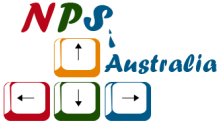Bone Fracture Detection And Localisation In X-Ray Using Real Time Object Detection Model
The proposed
model achieved a mean Average Precision at IoU 0.50 (mAP50) of 0.93, which represents a significant improvement over established benchmarks —a 9.4% relative increase over YOLOv5 (0.85 mAP50) and a 13.4% relative increase over Faster R-CNN (0.82 mAP50). It also demonstrated high precision (0.91) and recall (0.92), indicating robust performance in accurately identifying and localising fractures with a low rate of false positives and negatives.
